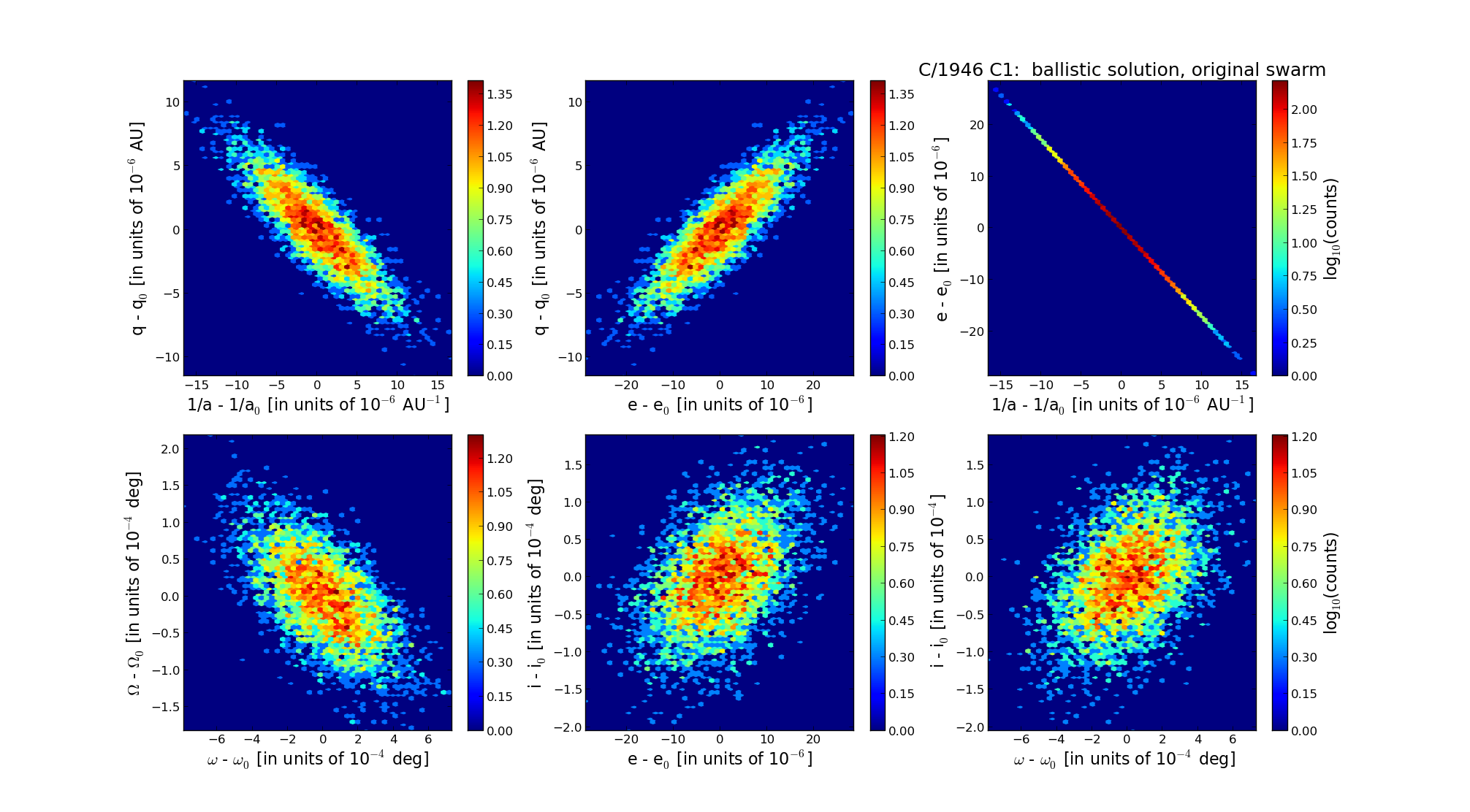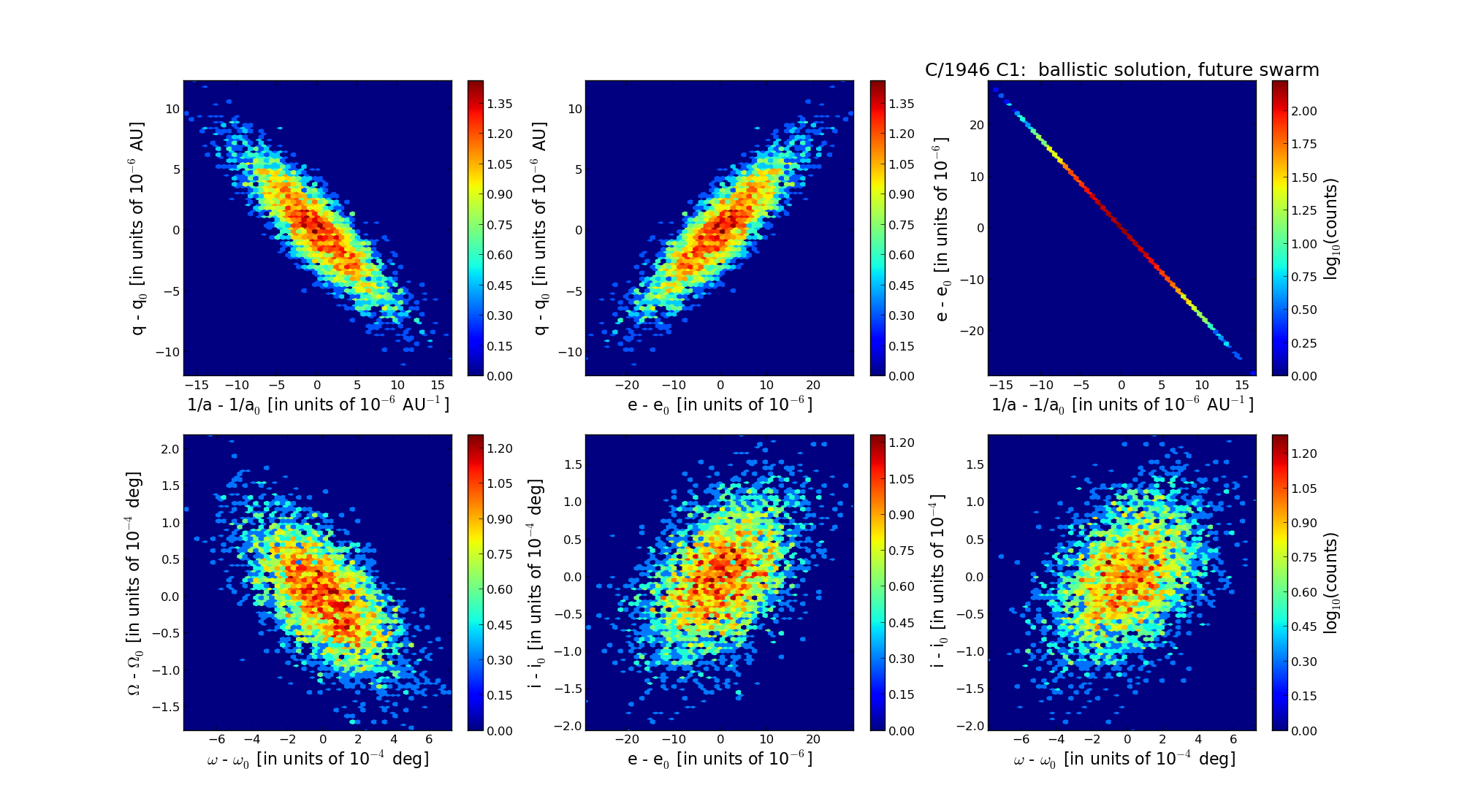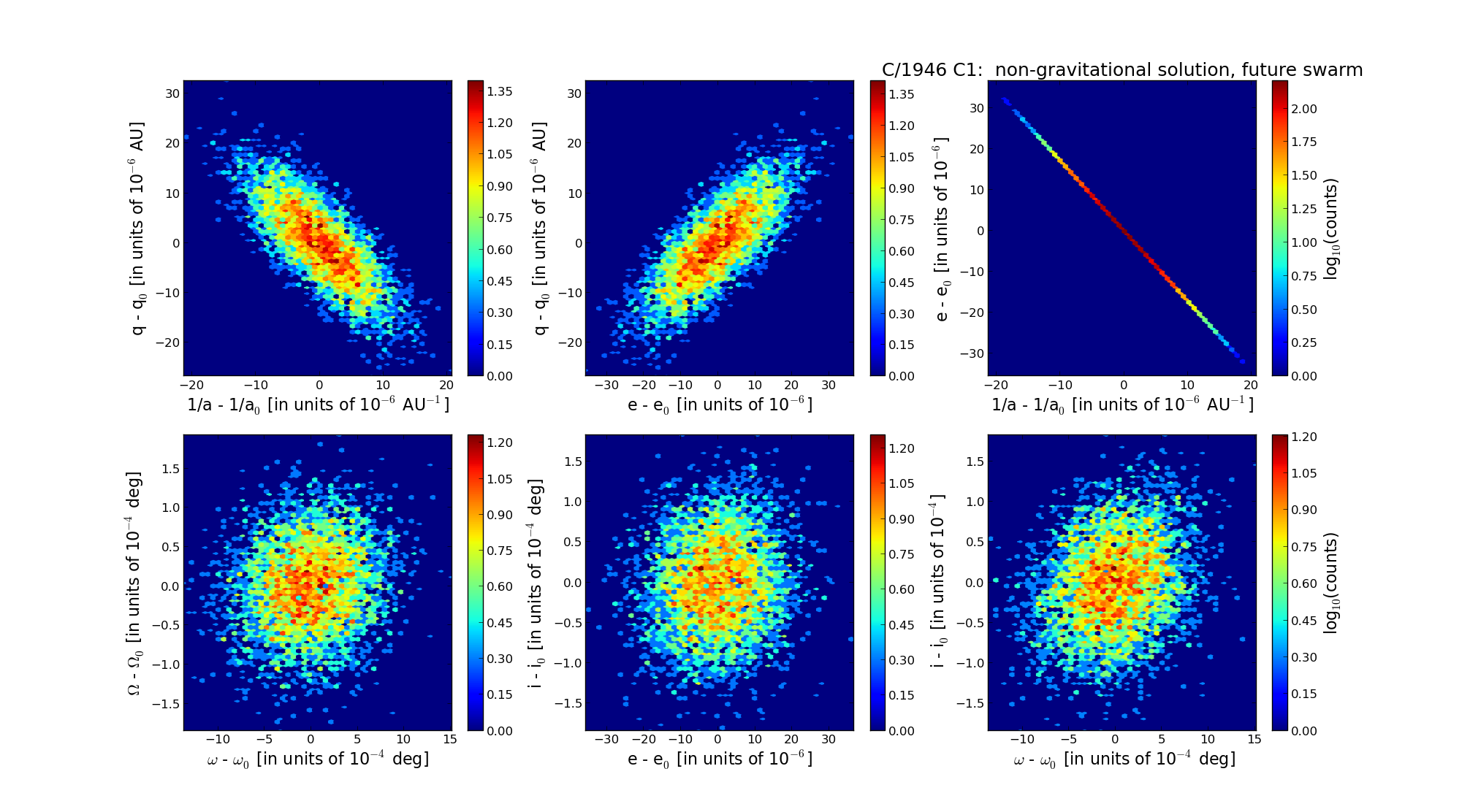| Solar System Dynamics & Planetology Group |
 |
C/1946 C1 Timmers |  |
| Solar System Dynamics & Planetology Group |
 |
C/1946 C1 Timmers |  |
| number of observations | 485 |
| number of residuals | 857 |
| data interval | 1946 Jan. 29 — 1947 Aug. 9 |
| rms [arcsec] | 2.54 |
| orbit quality class | 1a |
| Epoch (TT) | 19460410.0 | = JD 2431920.5 |
| time of perihelion passage (TT) | 19460413.264312 | ± 0.000368 |
| perihelion distance | 1.72412209 | ± 0.00000318 |
| eccentricity | 1.00114441 | ± 0.00000801 |
| argument of perihelion [deg] | 54.328447 | ± 0.000213 |
| longitude of the ascending node [deg] | 129.664999 | ± 0.000056 |
| inclination [deg] | 72.842650 | ± 0.000056 |
| inverse semimajor axis [10-6 au-1] | -663.76 | ± 4.64 |

| Epoch (TT) | 16461108 | |
| time of perihelion passage (TT) | 19460412.084826 | ± 0.000713 |
| perihelion distance | 1.71681103 | ± 0.00000306 |
| eccentricity | 0.99999862 | ± 0.00000789 |
| argument of perihelion [deg] | 54.466561 | ± 0.000212 |
| longitude of the ascending node [deg] | 129.577886 | ± 0.000055 |
| inclination [deg] | 72.875740 | ± 0.000056 |
| inverse semimajor axis [10-6 au-1] | 0.80 | ± 4.60 |

| Epoch (TT) | 22500307 | |
| time of perihelion passage (TT) | 19460412.859596 | ± 0.000352 |
| perihelion distance | 1.72038322 | ± 0.00000321 |
| eccentricity | 0.99933427 | ± 0.00000791 |
| argument of perihelion [deg] | 54.182409 | ± 0.000211 |
| longitude of the ascending node [deg] | 129.696232 | ± 0.000055 |
| inclination [deg] | 72.941443 | ± 0.000056 |
| inverse semimajor axis [10-6 au-1] | 386.97 | ± 4.60 |
| number of observations | 485 |
| number of residuals | 848 |
| data interval | 1946 Jan. 29 — 1947 Aug. 9 |
| rms [arcsec] | 2.17 |
| orbit quality class | 1b |
| Epoch (TT) | 19460410.0 | = JD 2431920.5 |
| time of perihelion passage (TT) | 19460413.262573 | ± 0.000674 |
| perihelion distance | 1.72409711 | ± 0.00000356 |
| eccentricity | 1.00106980 | ± 0.00000939 |
| argument of perihelion [deg] | 54.327041 | ± 0.000428 |
| longitude of the ascending node [deg] | 129.665283 | ± 0.000052 |
| inclination [deg] | 72.842371 | ± 0.000054 |
| inverse semimajor axis [10-6 au-1] | -620.50 | ± 5.44 |
| Nongravitational parameters [10-8 au/day2] | A1 = 1.857 ± 0.540 | A2 = 3.434 ± 0.409 | A3 = 0.0 (assumed) |

| Epoch (TT) | 16450825 | |
| time of perihelion passage (TT) | 19460412.089411 | ± 0.000901 |
| perihelion distance | 1.71675231 | ± 0.00000645 |
| eccentricity | 0.99982419 | ± 0.00002185 |
| argument of perihelion [deg] | 54.469479 | ± 0.000665 |
| longitude of the ascending node [deg] | 129.578179 | ± 0.000053 |
| inclination [deg] | 72.875457 | ± 0.000055 |
| inverse semimajor axis [10-6 au-1] | 102.41 | ± 12.73 |

| Epoch (TT) | 22490928 | |
| time of perihelion passage (TT) | 19460412.860782 | ± 0.000603 |
| perihelion distance | 1.72036623 | ± 0.00000764 |
| eccentricity | 0.99940339 | ± 0.00000964 |
| argument of perihelion [deg] | 54.181924 | ± 0.000402 |
| longitude of the ascending node [deg] | 129.696514 | ± 0.000053 |
| inclination [deg] | 72.941172 | ± 0.000055 |
| inverse semimajor axis [10-6 au-1] | 346.80 | ± 5.61 |